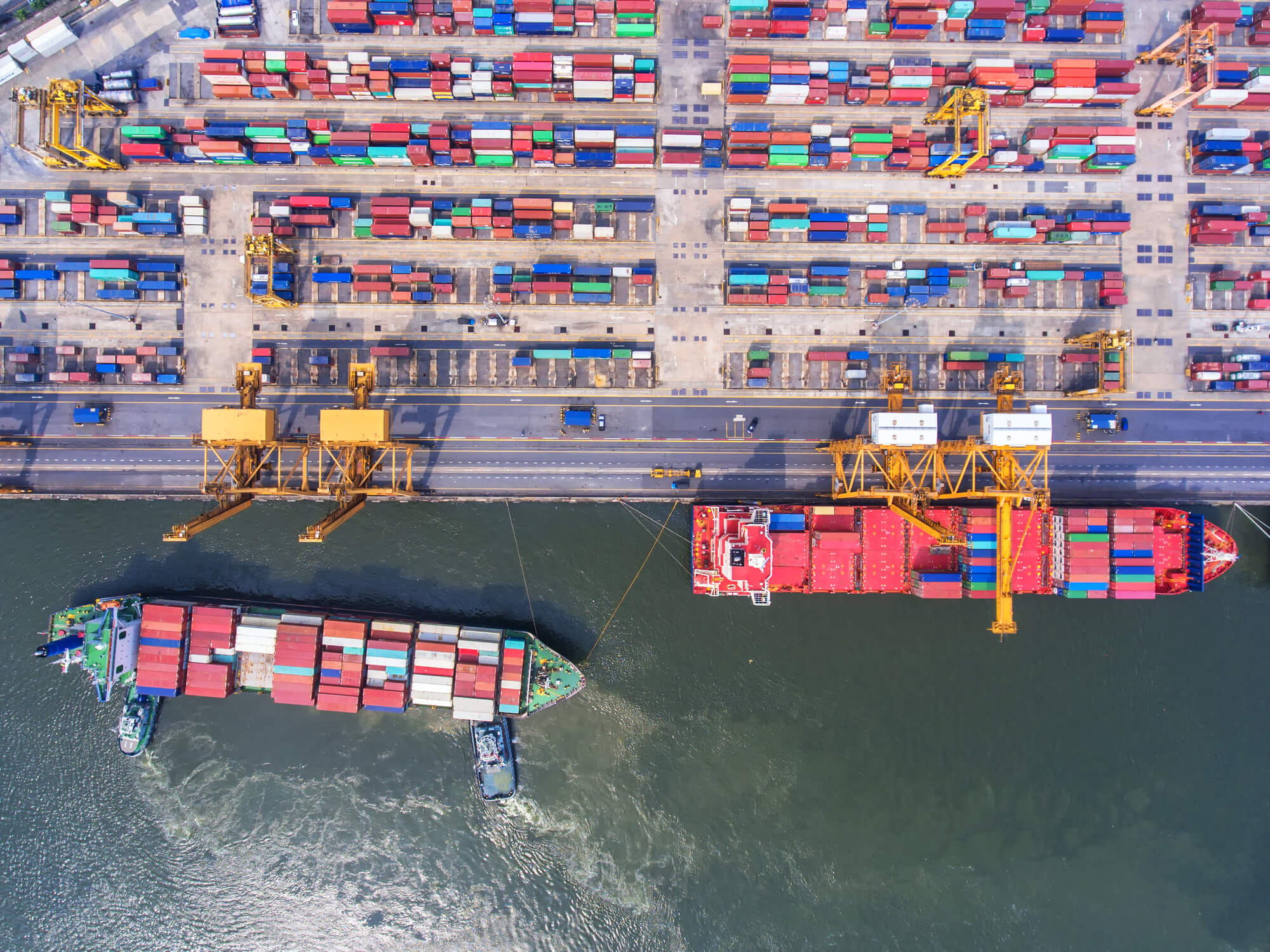
Cloud AI Managed Port Freight Management Systems
Whether it is a public or a private company that is responsible for managing port freight, its ability to handle large volumes at low costs and smaller space utilization can make its operations more efficient and profitable. Cloud AI has the capacity to run and manage port freight management systems in a highly effective and smooth manner by minimizing waiting time before docking for ships, standardizing critical data, information, and analytics across a unified and single dashboard, and solving other bottlenecks.
Through artificial intelligence and the cloud, enterprise resource planning of ports can become highly efficient and easy, and solutions and remedies can get automated to handle huge tasks at lower costs. With real-time information sharing and innovations for business model modifications, all the components of port freight management systems, like tallying, warehousing, and shipments and transportation, become sharper. By offering real-time monitoring solutions to ports, AI and cloud make them intelligent, smart, and ultra-modern.
Cloud Computing Technologies
Benefits of Cloud AI for Port Freight Management Systems
Cloud and AI technologies can help port freight management systems with the following:
- Allow for better management of logistics pertaining to loading and unloading of cargo by speeding up its throughput.
- Enable real-time collaboration between all the stakeholders and parties to ensure that storage space is available as and when required, and breakdown and repairs of vital equipment, such as RTG and cranes, is always scheduled and unanimously decided upon.
- Allow for real-time and efficient communications between vendors, logistic companies, customers, and government as well as private agencies so that all of them are always updated and on the same page.
- Minimize the time duration between a decision and its consequent action.
- Automate the reviewing and sending of purchase orders.
- Mitigate chances of human error and delays in effort-demanding processes, such as visual quality checks, drone inspections, anomaly detection, data entry, and anomaly detection, through machine learning and automation.
- Equip the port freight management systems with utilities including facial recognition, offline edits of reports, and automated entry of predictive as well as routine data.
- Make analytics and data available for evaluation and analysis to enhance the ability to make well-informed decisions.
- Modernize gate operations, allowing for quick entry and exit. This mitigates the issue of limited space by enabling a setting of trucks in the correct unloading sequence.
- Equip the port freight management systems with various, such as for reading weight and IDs of trucks, eliminating the need for data entry.
- Allow all employees to receive automated and real-time notifications and alerts of critical issues on their mobile devices.

Transforming for Innovation, Sustainability and Security
In short, all the components that constitute port freight management systems, along with new possibilities and ideas, are presented to port freight operating companies by cloud AI. The systems can be programmed according to the needs and requirements of different operations and activities. Usage, temperatures, vibrations, and other different parameters can be set using machine learning and AI, and breakdowns and repairs for different machines and equipment can be scheduled, and its information shared across everyone.
On-the-spot autonomous data entry and remote visual inspections with the help of drones through the cloud offer huge benefits to port freight companies. All the previous visual readings, as well as records, can be saved on the cloud for quick access and making metric-based predictions. Sensors can enhance the safety of workers within the port by checking for helmets and masks, etc., and sending out real-time notifications to managers in case of any carelessness. Facial recognition can take care of employee attendance, and automated billing and payments and matching of unreconciled entries through machine learning can provide utility to customers and vendors as well as to the company itself.
Cloud AI can greatly reduce the operational costs for port freight businesses by enabling its port freight management systems to handle many major activities and tasks on their own. AI can easily predict the factors that drive approvals and rejections and can handle them on its own without even bringing them up every time. This can considerably reduce the time required for reviewing and processing. The collaboration aspect can cater to all real-time communication requirements of different operations through cloud AI-based mobile applications. Various roles can leverage the capabilities of the cloud and artificial intelligence in this regard from virtually anywhere in the world. Custom applications that serve specific purposes can also be tailor-designed on the cloud for different features and services that the port freight business requires or wishes for.
Transforming for Innovation and Sustainability securing future competitive advantage
How CCT Can Help
Cloud Computing Technologies provides port freight management companies with business experts who thoroughly and carefully analyze and evaluate their operations before recommending processes and system modifications and eliminations to them for efficiency. CCT always focuses on driving value through advanced technologies. The technology giant is specialized in significantly improving port freight management systems by incorporating them with modern cloud and AI software and IoT for automation of different processes, minimization of breakdowns and maintenance through predictions, real-time alerts, and collaboration of shipping lines, employee allocations, operators, and gates, etc., informed decision making, reduction of cycle times, visual recordings and inspections, shipment tracking, pattern recognition, and reconciliations, etc. All these offerings reduce operational costs in a significant manner and enable recovery of investments within no time and give way to huge future profits.
Conclusion to Cloud AI Managed Port Freight Management Systems
Cloud AI can give a notable rise to the supply chain productivity of port freight management systems by minimizing error and cost in the pertaining industry. To make your business operations catering to port freight highly organized, optimize tasks for enhanced productivity, and gain access to smart warehouses and intelligent arrangement and retrieval of inventory, get in touch with Cloud Computing Technologies today. The company has a number of successful government-level contracts under its portfolio. It can make limitless possibilities available to your port freight business and integrate numerous cost and time efficiencies into your port freight management systems.
Generative AI Software Integration
Boost your business efficiency with our custom Generative AI Business Software, tailored for HR, finance, sales, event management, and customer service. Leveraging advanced natural language processing and AI-driven data science, we specialize in customer segmentation, sales analysis, and lead scoring. Elevate your operations and gain a competitive advantage with our precision-driven AI solutions. Contact us to integrate AI seamlessly into your key systems and transform your business.
What clients say about Cloud Computing Technologies
★★★★★ Rated 5 out of 5
"CCT's diverse skills and expertise has reduced our technical debt by millions of dollars to which we have reinvested into future capabilities."

Mrs. Hanson
★★★★★ Rated 5 out of 5
"With CCT migrating our critical systems into the AWS, 80% our staff is now remote working."

Mrs. Miller
★★★★★ Rated 5 out of 5
"CCT showed us how to meeting regulatory compliance in AWS Landing Zone and greatly improved our cloud security controls."

Mrs. Wilson
★★★★★ Rated 5 out of 5
"CCT provided our agency with application rationalization services and successfuly applicaton migrations meeting all KPIs and SLAs."

Federal Agency
★★★★★ Rated 5 out of 5
"I highly recommend the data science team at CCT. They are technically proficient, great communicators, unbiased, and reduced our false positives by 68%."

Mr. Brown
★★★★★ Rated 5 out of 5
"The team at CCT is knowledgable and insightful in developing a cloud architecture leading to our mission success."

Mr. Robinson
Experience and Agile Expertise
you can trust
Years in business
20
Contracts Awarded
180
+
Contact us for additional strategies and solutions for Cloud AI Managed Port Freight Management Systems. Further information about Cloud AI Managed Port Freight Management Systems.
Frequently Asked Questions
A Cloud AI Managed Port Freight Management System leverages cloud computing and artificial intelligence to optimize and streamline port freight operations. The system can predict, manage and monitor freight movements in real-time, and make the port operations more efficient and cost-effective.
The system significantly enhances port productivity by using artificial intelligence to predict and manage freight flow effectively. It reduces the dwell time of goods, improves scheduling, enhances visibility of operations, and improves decision-making, leading to higher operational efficiency.
At CloudComputingTechnologies.AI, we prioritize security. We employ stringent encryption protocols, enforce strict access control policies, and continuously monitor system operations to ensure the security of data and the overall system.
AI contributes to analyzing historical freight data to predict and optimize future freight flows, which results in improved productivity and reduced costs. It automates many manual processes, assists in real-time decision-making, and proactively detects and alerts for potential problems.
The system is highly scalable, making it adaptable for any size of port, from small domestic ports to large international facilities. It tailors to the specific needs, infrastructure, and operational complexity of each port.
Implementation starts with an in-depth consultation with our team at CloudComputingTechnologies.AI. We assess your specific needs, current infrastructure, safety requirements, and freight volume. Based on this review, we will customize a Port Freight Management System specifically suited to your port.
Our implementation process is designed to minimize disruption. We plan carefully, and provide comprehensive training to all personnel, and offer continuous support during every stage of implementation, ensuring a smooth transition.
Yes, it is. By enhancing operational efficiencies, reducing delays, and aiding in accurate decision-making, the system delivers substantial cost savings in the long run. Furthermore, the low maintenance requirements of cloud-based systems also contribute to keeping operational costs down.







